

Skin Cancer Subtypes and Surgeries
Blake Phillips, MD earned his medical degree from the University of Texas McGovern Medical School, followed by a Dermatology Internship and Resi dency at UAB. He also did a Fellow ship in Micrographic Surgery and Dermatologic Oncology at UAB.
What are the different types of skin cancers?
Let me start by saying that skin cancer is incredibly common, and unfortunately, rates are on the rise.

There are multiple different subtypes, including everything from the tiny structures that lead to rare forms in the skin to the more common versions. The most common three are basal cell, squamous cell, and melanoma.

Basal cell and squamous cell generally come from the types of cells that make up the structure of the skin. Sometimes these can look like a non-healing sore or a bump or a pimple. They might have bleeding, and they can be a little
Basal cell, which is the most common subtype of skin cancer, has a lower overall risk profile than most cancers that are commonly tracked.
Melanoma, by contrast, tends to be more pigmented because it comes
UAB Doctor Makes History with Breakthrough Heart Procedure
By Ansley FrAnco
This April, William Maddox, MD, an electrophysiologist at the University of Alabama at Birmingham, was the first physician in Alabama to perform a pulsed field ablation (PFA). Access to new technology like the Affera Mapping and Ablation System for atrial fibrillation is why Maddox was drawn to UAB.

more effective, and for us more efficient. This is why I’m here: to be able to work on these technologies and offer them to our patients,” Maddox said.
“At UAB, we strive to make the therapy that’s offered to our patients safer,
Atrial fibrillation, the most common sustained cardiac arrhythmia, affects millions of Americans annually. According to a 2024 study by the University of California San Francisco, A-fib affects nearly five percent of the U.S. population or about 10.5 million adults. The condition is associated with increased risks of stroke,
heart failure and diminished quality of life.
Traditional treatment for A-fib includes medication, lifestyle modification and catheter ablation. Historically, ablation has relied on thermal energy, either in the form of heat or cold. While effective, these techniques can cause collateral damage to the surrounding tissues, including the esophagus and phrenic nerve, and in rare cases, lead to atrial-esophageal fistula, a complication with a high fatality rate.
from the melanocytes, cells that actually produce pigment. Most of those lesions tend to be brown or have multiple colors, sometimes brown and black and red.
What do you look for in considering signs of melanoma?
Generally, the rule of thumb is we use the A, B, C, Ds as a sign for melanoma. So A is for asymmetry. B is for borders or having border irregularity. Rather than having a sharp edge, it looks like it’s a little bit moth-eaten or irregular. C is for color. It’s either very, very dark out of proportion to someone’s typical moles or multiple colors in one lesion. D is for diameter, which is not an entirely specific indicator, but generally larger than a pencil eraser. And E would be for evolution,
(CONTINUED ON PAGE 8)

tender.
Blake Phillips, MD
William Maddox, MD

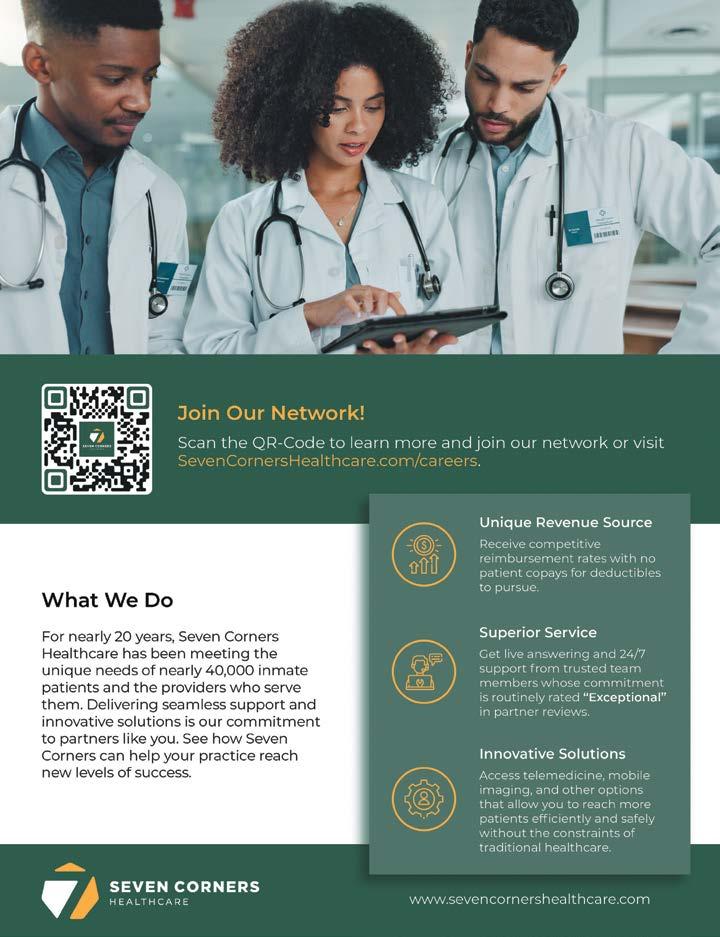
Not Your Every Day Top Ten List
By Jim Hoover
On May 12, 2025, the head of the United States Department of Justice’s Criminal Division, Matthew Galeotti, issued a Memorandum to all division personnel outlining the division’s updated enforcement priorities. The stated purpose of the Memorandum is to outline the Criminal Division’s enforcement priorities and policies for prosecuting corporate and white-collar crimes in the new Administration. When investigating and prosecuting these crimes, Criminal Division attorneys will be guided by three core tenets: (1) focus; (2) fairness; and (3) efficiency. The Memorandum elaborates on these principles and amends several Criminal Division policies.
Focus - The Department of Justice (“Department”) listed 10 priorities in high-impact areas of focus. Three of which include health care topics. The top ten areas are:
1. Waste, fraud, and abuse, including health care fraud and federal program and procurement fraud that harm the public fisc;
2. Trade and customs fraud, including tariff evasion;
3. Fraud perpetrated through certain foreign adversary companies;
4. Fraud that victimizes U.S. investors,
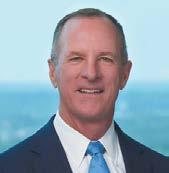
individuals, and markets including, but not limited to, Ponzi schemes, investment fraud, elder fraud, service member fraud, and fraud that threatens the health and safety of consumers;
5. Conduct that threatens the country’s national security, including threats to the U.S. financial system by gatekeepers, such as financial institutions and their insiders;
6. Material support by corporations to foreign terrorist organizations, including recently designated Cartels and transnational criminal organizations (“TCOs)”;
7. Complex money laundering, including Chinese Money Laundering Organizations, and other organizations involved in laundering funds used in the
manufacturing of illegal drugs;
8. Violations of the Controlled Substances Act and the Federal Food, Drug, and Cosmetic Act (“FDCA”), including the unlawful manufacture and distribution of chemicals and equipment used to create counterfeit pills laced with fentanyl and unlawful distribution of opioids by medical professionals and companies;
9. Bribery and associated money laundering that impact U.S. national interests, undermine U.S. national security, harm the competitiveness of U.S. businesses, and enrich foreign corrupt officials; and
10. Crimes (1) involving digital assets that victimize investors and consumers; (2) that use digital assets in furtherance of other criminal conduct; and (3) willful violations that facilitate significant criminal activity.
The Memorandum also identifies dishonest actors that exploit government programs to enrich themselves through waste, fraud, and abuse, and specifically discusses rampant health care fraud by corporations and individuals that defraud important government initiatives such as Medicare and Medicaid.
Fairness - The Memorandum outlines the Department’s steps towards fairness in prosecuting corporations and individuals. The Department’s first pri-
ority is to prosecute individual criminals. The Memorandum recognizes that individuals such as company executives, officers, or employees of the companies are the ones who commit the crimes.
The Department also acknowledges that not all corporate misconduct warrants federal criminal prosecution. Prosecution of individuals, as well as civil and administrative remedies directed at corporations, are often appropriate to address low-level corporate misconduct and vindicate U.S. interests. Prosecutors in the Criminal Division must consider additional factors when determining whether to charge corporations, including whether the company reported the conduct to the Department, the company’s willingness to cooperate with the government, and its actions to remediate the misconduct.
To help ensure fairness and individualized assessments, Mr. Galeotti directed the Criminal Division’s Fraud Section and the Money Laundering and Asset Recovery Section to revise the Corporate Enforcement and Voluntary Self-Disclosure Policy (“CEP”) to clarify that additional benefits are available to companies that self-disclose and cooperate, including potential shorter terms. The Department has revised the CEP so that its core com-
(CONTINUED ON PAGE 8)




Jim Hoover
AI Software Helps Healthcare Providers Receive Better Reimbursement Rates
By lAuren JoHnson
This year is the fifth consecutive year that Medicare has cut physician reimbursement rates with a 2.83 percent cut that started in January.
“Medicare, in particular, has always wanted to cut five percent reimbursement for years and years, and they’re doing that now through what they call sequestration,” said Kevin Bonner, president of Systemedx. “Basically, they give you things that you have to track, like blood pressure. You have to track all these things or they’re going to penalize you anywhere from two to eight percent so they’re getting a lot of money back. A sequestration code is like a take-back code.”
Sequestration and cutting reimbursements mean doctors get paid less, and because of this, some doctors won’t accept new Medicare patients.
“That affects the health of the patient when the good doctors don’t see them because Medicare doesn’t pay as well as the other insurance companies,” Bonner said.
Systemedx, a healthcare technology company based in Cullman, is using

AI technology to improve billing and increase reimbursement rates. Three automated systems the company has implemented include AI Coding, AI Office Visit, and AI Overwatch.
“We like to say Medicare has an automated bot that tries to lower or deny claims. Systemedx has a bot that fights for you,” Bonner said. “Our bot watches the historical data of how Medicare is paid to all our clinics. We monitor how Medicare pays and then show you how you can get the maximum reimbursement.”
This AI tool watches denials and compares denials to others in the same field, showing why a claim was denied.
The bot watches for rejections and provides information about what needs to be improved and what areas need more attention to get better reimbursement rates.
“Your objective in billing is to get it paid the first time you send it to the insurance,” Bonner said. Systemedx also utilizes software that listens to the doctor and patient conversations and generates notes with CPT codes (Current Procedural Terminology) and ICD codes (International Classification of Diseases). After listening to the conversation, the bot puts the charges and the problems into the system.
Within the last three years, Systemedx has been on the cutting edge of an automated tool that reads surgery notes. After a surgery is completed, the bot will read the office notes from the hospital and generate the CPT.
“If you use the AI to do your coding, it’s constantly adjusting to get the maximum reimbursement,” Bonner said. “It also does a thing called process automation where it actually goes in and scrubs the claim. In other words, if the claims get entered through some kind of manual process, it’ll check them to make sure
you’re getting it paid the first time. Then auto sends to clean claims. Auto receives the check amounts back. They’re called remits when you’re doing billing. It automatically gets the remits back and posts to the correct patient accounts.”
The claim will be zeroed out and the automated system will provide a worksheet of claims that needs to be reviewed by human eyes. It pinpoints areas that might have caused the claim to be denied, like missing office notes or missing modifiers.
Another system, called AI Overwatch, keeps an eye on all critical areas in billing like the days in accounts receivable. It shows how the billing process is doing as a whole and monitors deadlines, like timely filing requirements.
“All of this has brought incredible improvements. I did the surgery readings for a practice in Huntsville that is now at $8.7 million in savings. That is a large practice – 30 surgeons and 180 providers – but they’ve made $8.7 million with the AI bot, and that was just reading their surgeries and coding them,” Bonner said.
In addition to new tools like read-
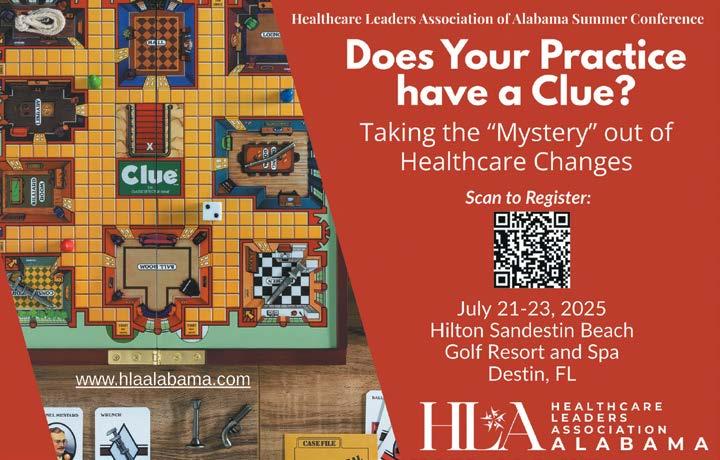

Kevin Bonner
Have an idea for a medical device? We can help.
At Hardware Park, we help bring new ideas to life. As a dynamic hub for real-world product development and NextGen education, we provide the design and engineering expertise, tools, and industry connections essential to turning ideas into reality. Embedded in Birmingham’s thriving startup ecosystem, we’re helping develop breakthrough medical devices — from advancing neurosurgery and fighting the opioid crisis to improving dialysis and restoring sight Tell us about your idea. It’s free, confidential, and you own the idea. Scan the code to get started today


LOCAL ROOTS. NATIONAL REACH.

With one of the nation’s largest healthcare law practices, Holland & Knight has more than 475 experienced attorneys covering virtually every segment of the healthcare industry, from transactional matters, regulatory compliance and real estate to litigation, government enforcement and public policy issues.
Our dedicated healthcare attorneys and professionals – in Birmingham and throughout the country – have the insight, experience, depth and resources to help promote and protect your interests.
www.hklaw.com
Colin H. Luke, Partner Birmingham, AL | +1.205.226.5717
HIPPA Security Alert Mandatory Measures On The Horizon
By lAurA FreemAn
HIPPA security precautions previously considered optional are likely to soon become mandatory. Once finalized, getting upgrades in place in the rush to comply could take a while. To avoid a time crunch before the deadline, specialists in HIPPA security are recommending that providers get started now evaluating where they are and what they will need to do to meet the new security rules.
“Healthcare is the number one target of cyber criminals around the world, and they seem to continue finding new ways to get around the security efforts of hospitals and practices. That’s why HIPPA rules for Electronic Protected Health Information (ePHI) are becoming more stringent,” Ron Shoe, CEO and Chief Cybertechnologist of SIP Oasis, said.
Beyond the regulatory consequences of failing to meet HIPPA requirements, inadequate digital security could cost hospitals and practices millions. A hack that breeches cyber defenses could put financial information at risk of theft and open the door to a ransomware attack. Potentially even more devastating are class action lawsuits if patient identity
and financial information or medical records are exposed.
“Insurance is available to offer some degree of protection against ransomware and liability, but for claims to be paid, you’re only as safe as you can prove in a court of law that your data is safe. You have to have evidence that you took all reasonable measures to protect information, and that starts with being able to show you complied with all HIPPA security rules,” Shoe said.
The Notice of Proposed Rulemaking (NPRM) has been posted for comments. Updates are expected to be finalized in a few months, with enforcement coming after an implementation period. As of now, proposed rule changes include mandatory multi-factor authentication, biannual vulnerability scans and annual penetration tests. The changes also call for mandatory encryption of all ePHI, network segmentation, asset and network inventory and log retention.
“It will take some work to implement the updates and confirm that you are in compliance with the new rules, but in the end the changes should put providers in a more defensible position,” Shoe said. “You’ll have a record of your security
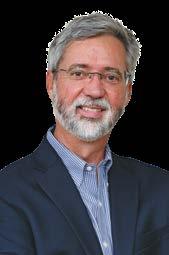
efforts if you ever need evidence of due diligence.
“The important thing in planning upgrades is to make sure you’re getting advice from someone who has the right expertise. Just as yoga teachers and weight trainers are both in the fitness world but do very different things, there are also different digital specialties. The person who installed your computers may be a wizard at getting printers to work, but they may not know anything about HIPPA rules. You need someone who can determine whether encryption software you’re considering will meet requirements, set up
HOW MUCH ASSURANCE
do you have in your malpractice insurance?
With so many medical liability insurers having sold out to Wall Street, there’s an important question to ask. Do you want an insurer that’s owned and led by physicians, with $7.3 billion in assets, and a financial award program that’s paid more than $175 million in awards to retiring members? Or do you want an insurer that’s focused on paying its investors?
Join us and discover why our 90,000+ members give us a 93% satisfaction rating when it comes to exceptional service.

vulnerability scans and penetration tests, and understand what devices should be inventoried and the types of data to be logged.”
With cyber security measures implemented, providers’ digital files are less likely to be hacked in the first place. Keeping data safe is also a matter of mindset and training.
“Around 91 percent of cyber hacks begin with a click on an e-mail, and about 19 percent of people will click on a fishing email,” Shoe said. “All staff with online access should be trained to recognize and avoid them. As AI gets better at spoofing voices, photos and other identifying information, the challenges will likely grow.
“Cyber attacks are becoming a growing part of organized crime, particularly those coming from countries with no extradition agreement. The bad guys are getting better, and to make it even easier for them, ransomware is now available as a service that can be rented with the creator paid a percentage of the money taken from the victim.”
There is always the option of refusing to pay ransom, but it could quickly become even more expensive. In one
(CONTINUED ON PAGE 10)
Ron Shoe
Skin Cancer Subtypes and Surgeries,
which means it’s changing or growing. How often do people come in when it’s late in the process?
Unfortunately, fairly often. Sometimes people who lack access to care, or are nervous about the costs will wait to come in. And we also see people who think it’s something else.
Basal cell is very locally destructive so if someone comes in late with that, they will not only have a big wound that’s
non-healing and tissue that’s being lost, but you can have real functional compromise. It’s very rarely metastatic though.
Squamous cell actually causes more deaths than melanoma. But the rate is lower because, in general, it’s not as an aggressive per unit cancer, but it is more prone to metastasis and local recurrence. Melanoma is widely advertised as one that can misbehave pretty quickly.
I understand that Dr. Monheit with your practice was the first Mohs surgeon in Alabama. How does Mohs surgery differ from a local excisional procedure?
They differ in their approach and degree of precision. Excisional surgery removes a larger area of tissue in one go. With Mohs, the surgeon cuts away the tumor in layers, starting with the visible, raised portion of the tumor and a margin
UAB Doctor Makes History with Heart Procedure,
“We’ve long been looking for ways to continue to be effective in our ablation, but to mitigate those possible complications. They’re quite rare even with using radiofrequency (RF), but we would like to make things 100 percent safe, which is almost an impossibility in medicine, but we continue to strive to be there,” Maddox said.
The Affera system, developed by Medtronic, integrates high-density cardiac mapping with both pulsed field and radiofrequency ablation in a single catheter. Data has shown that the procedure has nearly zero risk of atrial esophageal fistula and phrenic nerve injury. Unlike traditional thermal ablation, PFA uses high-voltage electric fields to induce cell death without the need for heat or cold.
This significantly reduces the risk of damage to non-cardiac tissues.
The first procedure was conducted on a patient who had long-standing persistent atrial fibrillation that had been going on for about six or seven months who was quite symptomatic. “We were able to do the ablation, and the patient left the hospital with a normal rhythm, and they have been doing well since,” Maddox said. “The fact that the mapping system and the ablation system is all in one unit makes it a very easy system to adopt.”
Maddox, who serves as medical director of the EP lab at UAB, performs more than 1,500 procedures annually, about 80 percent of which are ablations. In just a few weeks, UAB’s electrophysi-
Not Your Every Day List, continued
ponents such as the paths for potential declination, the available fine reductions for a company’s cooperation and remediation, and relevant factors that determine corporate resolution are more easily understandable.
Efficiency – The Memorandum directs prosecutors to move expeditiously to investigate cases and make charging decisions. This means offices will work closely with the relevant Sections to track investigations and ensure that cases do not linger and are swiftly concluded.
Additionally, independent compliance monitors must only be imposed when they are necessary, i.e., when a company cannot be expected to implement an effective compliance program or prevent recurrence of the underlying misconduct without such heavy-handed intervention. When imposed, monitorships must be narrowly tailored to achieve the necessary goals while minimizing expense, burden and interference with the business.
The Memorandum makes clear that investing in effective compliance programs and being transparent with authorities will help protect against criminal liability or at least help reduce potential consequences. The revised CEP policies provide enhanced incentives for voluntary self-disclosure, while also clarifying
of skin cells around it. The surgeon also removes a thin layer of tissue from the site which they examine by microscope. If there are any cancer cells in that sample, the surgeon identifies their location, and removes an additional thin layer of tissue from the area with the cancer cells. You do this until you have it all. The point is to remove as little skin as possible so it’s mostly used for areas that are either cosmetically or functionally sensitive, or just tissue limited.
continued from page 1
ology team has completed 74 procedures with the Affera system without any significant complications.
The early data on PFA using the Affera system supports this observation. Studies and early clinical trials suggest that the technology offers comparable efficacy to traditional ablation with significantly fewer complications. While recovery times remain similar, Maddox said patients have reported reduced chest pain following PFA procedures, likely due to the tissue-selective nature of the treatment.
Maddox’s path to medicine was anything but linear. Originally a history major and an avid cyclist, he found his calling after a cycling friend invited him to observe a neurosurgery case at age 19.
That experience led him to switch his major to exercise physiology. Eventually, he discovered a deep passion for internal medicine and later, for the intricate physiology of the heart.
“The heart is beautiful and simplistic in his design, but then also the nuances of it are very complex. And I like the duality there a bit and felt that it was so fascinating,” Maddox said. “
His interest in electrophysiology was solidified during his first few days in the EP lab when he witnessed a dramatic ventricular tachycardia ablation. From that point forward, Maddox committed himself to not only performing cutting-edge procedures but also helping to bring them to patients as safely and effectively as possible.
from page 3
the consequences of failing to meet these standards.
Additionally, with the expansion of the Whistleblower Pilot Program, companies must be vigilant across a wider range of legal and regulatory risks. Proactive compliance and a strong internal report-


ing culture are more important than ever to mitigate the risk of whistleblower actions and DOJ enforcement. Accordingly, companies should review and update their internal investigation, reporting and remediation processes where appropriate to ensure they are positioned to take full



advantage of the updated policies and current enforcement culture.
Jim Hoover is a health care trial and compliance Partner at Burr & Forman LLP practicing exclusively in the firm’s health care group. Jim may be reached by telephone at (205) 4585111 or by E-mail at jhoover@burr.com.



The Alabama Rural Medical Service Awards (ARMSA) incentivize family medicine, internal medicine, pediatric medicine, Med/Ped physicians, OB/GYNs, and primary care nurse practitioners to practice in rural, medically underserved areas in Alabama. ARMSA offers $50,000 a year for primary care physicians, with a 3-year maximum award period. The award is a service loan that is payable by years of service.
The Alabama Rural Medical Service Awards (ARMSA) incentivize family medicine, internal medicine, pediatric medicine, Med/Ped physicians, OB/GYNs, and primary care nurse practitioners to practice in rural, medically underserved areas in Alabama. ARMSA offers $50,000 a year for primary care physicians, with a 3-year maximum award period. The award is a service loan that is payable by years

























AI Software Helps Healthcare Providers Receive Better Reimbursement Rates,
continued from page 4






ing surgery notes and listening to patient conversations, Text to Pay, a feature Systemedx started this year, is another improvement that helps clinics collect money faster and gives patients an easy option to pay through their smartphone within 24 hours of their visit. It’s also cutting costs on postage and saving time.
HIPPA
























BIRMINGHAM | UAB St. Vincent’s Birmingham 805 St. Vincent’s Dr, Ste 100 | Birmingham AL 35205
CULLMAN | 1301-A Bridge Creek Dr NE | Cullman AL 35055
HOOVER – HWY. 150 | 2321 John Hawkins Pkwy. Ste 113 | Hoover AL 35244
HOOVER – HWY. 280 | 5406 US Hwy 280 East, Ste D106 | Hoover AL 35242
GARDENDALE | 323 Fieldstown Road, Ste 105 | Gardendale AL 35071
PELHAM | 3143 Pelham Pkwy | Pelham AL 35124
As AI technology continues to become more advanced, Bonner expects it to help improve the general health of the public. These AI programs will assist doctors who are already busy and aren’t able to provide as much attention to each individual patient as they’d like to.
Security Alert, continued from page 6
case, a hacker’s retribution for a provider who wouldn’t or couldn’t pay was to post naked photos of cancer patients online. Lawyers recruited those patients for a class action suit that ended up in a $65 million settlement.
Exposure of patient social security numbers, insurance identification, phone numbers and addresses puts them at risk for fraud and even life threatening situations. In one case, a woman with a restraining order against a violent man was hiding in another state, but had her address exposed on the dark web because
of a medical breech.
Even when insurance covers a provider’s financial losses, there can still be lean months of delays waiting for reimbursements for care to come through while insurance companies and Medicare sort out which claims are real and which are false based on stolen information.
“To fight digital crime, the best strategy is prevention,” Shoe said. “Make it hard for hackers. That means keeping digital security up to date and training staff to be wary and vigilant.”


Matthew B. Beidleman, MD Christopher S. Carter, MD Emily Bell Casey, MD Ricardo E. Colberg, MD Rachel G. Henderson, MD
Charles T. Carnel, MD
Jay S. Umarvadia, MD T. Daniel Smith, MD José O. Ortega, MD Monte M. Ketchum, DO
Jeffrey C. Davis, MD Jeffrey R. Dugas, MD
Andrew M. Cordover, MD E. Lyle Cain, Jr., MD
Christopher M. Beaumont, MD
Wayne McGough, Jr., MD Kathleen E. McKeon, MD Daniel C. Kim, MD Christopher H. Garrett, MD Benton A. Emblom, MD
Norman E. Waldrop, Ill, MD
Marcus A. Rothermich, MD Charles C. Pitts, Jr., MD K. David Moore, MD


















HHS, FDA Issue Request for Information to Support Administration’s Deregulatory Agenda
By JordAn K. Brossi, micHAel J. Werner And BetH neAl PitmAn
The U.S. Department of Health and Human Services (HHS) and the U.S. Food and Drug Administration (FDA) recently issued a Request for Information (RFI) titled “Ensuring Lawful Regulation and Unleashing Innovation to Make American Healthy Again.” The RFI requests public comments and recommendations on HHS and FDA regulations that should be eliminated “to lower healthcare costs, reduce burdens on physicians, and address the prevalence of chronic disease.” Public comments are due by July 14, 2025.
The RFI is a component of the Trump Administration’s deregulatory approach. The announcement details changes to HHS rulemaking efforts that are consistent with President Donald Trump’s Executive Order (EO) 14192 titled “Unleashing Prosperity Through Deregulation.” EO 14192 seeks to limit the number of regulations issued by federal agencies and reduce regulatory burdens. As part of that aim, HHS will implement the following measures:

Pitman
• at least 10 existing regulations, guidance documents, memos, policy statements and similar directives will be eliminated for every new regulation proposed
• all new regulations in fiscal year 2025 will be required to cost “significantly less than zero,” indicating new regulations will be expected to generate savings
• HHS will publish annual reports detailing costs associated with new regulations and explanations for how rules being eliminated will offset the cost of implementing new regulations
• To inform the HHS decisions on
specific regulations to eliminate, the RFI requests information from the public on regulations to be eliminated within the following categories:
• unconstitutional regulations and regulations that raise serious constitutional difficulties, such as exceeding the scope of the power vested in the federal government by the U.S. Constitution
• regulations that are based on unlawful delegations of legislative power
• regulations that are based on anything other than the best reading of the underlying statutory authority or prohibition
• regulations that implicate matters of social, political or economic significance that are not authorized by clear statutory authority
• regulations that impose significant costs upon private parties that are not outweighed by public benefits
• regulations that harm the national interest by significantly and unjustifiably impeding technological innovation, infrastructure development, disaster response, inflation reduction, research and development, economic development, energy production, land
use and foreign policy objectives
• regulations that impose undue burdens on small businesses and impede private enterprise and entrepreneurship
What’s Next
Public responses to the RFI are voluntary. Stakeholders are asked to identify “the specific regulation, guidance, or requirement at issue along with its administering HHS division” as part of their comments. It is expected that the Trump Administration will take some of the comments it receives into account as it seeks to issue future regulations, including those that are key priorities for the administration, including but not limited to, potential rulemaking in response to EOs on prescription drug pricing.
Interested stakeholders are requested to submit comments by July 14, 2025. Interested stakeholders may submit responses through a newly established portal on Regulations.gov.


Jordan Brossi is a senior public affairs advisor and Michael Werner is a partner in Holland & Knight’s Washington, D.C., office. Beth Pitman is a partner in Holland & Knight’s Birmingham, Alabama, office.
Beth
Preventing Violence in Outpatient Care: Strategies for a Safer Workplace
By tHe institute At mAgmutuAl™
Violence against healthcare workers is an escalating crisis, with outpatient settings representing high-risk environments. While workplace violence in hospitals has been extensively studied, incidents in outpatient offices receive far less attention — despite the fact that standalone clinics often lack security personnel. Between eight percent and 38 percent of healthcare workers experience physical violence during their careers, and reports of workplace harassment more than doubled between 2018 and 2022.
Violence in healthcare settings takes many forms, including verbal abuse, physical assaults, cyberbullying and even stalking. Perpetrators range from patients and their families to colleagues and personal acquaintances. The psychological toll on healthcare workers is significant, contributing to anxiety, depression, burnout and higher staff turnover, ultimately impacting patient safety and care.
Despite these risks, healthcare workers often underreport incidents, accepting violence as part of the job. A combination of high patient volumes,
long wait times, administrative burdens and increasing patient frustration has created an environment where aggression toward healthcare professionals is more common. However, leaders of ambulatory care organizations have both an ethical and legal duty to ensure a safe workplace. The Occupational Safety and Health Act’s General Duty Clause mandates a hazard-free work environment, and Joint Commission accreditation standards require organizations to establish workplace violence prevention programs.
Strategies for Preventing and Managing Workplace Violence
Healthcare organizations must adopt a proactive approach to mitigate the risks of violence. One of the most effective strategies is anticipation. Managers should train staff to recognize early warning signs of patient frustration and implement clear communication protocols to prevent escalation. A zerotolerance policy for violence should be established and enforced. Staff should also be trained in de-escalation techniques, such as active listening and maintaining a calm environment. Having an office manager or patient support
representative available to mediate conflicts can further alleviate tensions.
Environmental design plays a crucial role in workplace safety. Offices should establish secure patient care areas, using locked doors, electronic access controls and video surveillance to monitor high-risk locations. Emergency alert systems, such as panic buttons, code words or discreet hand signals, allow staff to call for assistance without exacerbating volatile situations. Additionally, clinics should have clear weapons policies, emergency response plans and relationships with local law enforcement to prepare for worst-case scenarios such as armed intruders.
Regular practice drills ensure that all staff members are prepared for emergencies. Training sessions led by professionals can help healthcare workers develop the skills necessary to handle violent situations. Perhaps most importantly, organizations must foster a culture of trust, where employees feel comfortable reporting incidents without fear of retaliation. By prioritizing staff safety, healthcare organizations not only protect their employees but also create a more secure and effective environment for patient care.













Tasnia Matin, MD
W elc oming Tasnia Matin, MD and J essie Co rrea, CRNP
Jessie Correa, CRNP







Why entrust your practice to a generalist when you could have an advisor that understands your specific needs and the challenges of the healthcare industry?


Warren Averett is uniquely equipped with experts who have dedicated their careers to helping medical practices thrive. We help physicians make smart personal and business decisions. We’re here for you.


Rep. Paul Lee’s Leadership Opens the Door for Retired Physicians to Serve Again
By dAniel F. JAcKson, md
As a physician, I’ve witnessed firsthand the growing gap between patients and the care they need – fueled by a physician workforce stretched thin. Rising costs, declining reimbursement rates, physician burnout and the increasing cost of liability insurance all make it harder to recruit and retain doctors in Alabama.
But a new law, passed by the Legislature and signed by Governor Kay Ivey, offers a bit of hope – and it’s thanks to the leadership of State Representative Paul Lee of Dothan.
Rep. Lee sponsored legislation to remove a bureaucratic hurdle that has long prevented more retired physicians from volunteering at free clinics. Until now, the law required retired doctors to commit to at least 100 hours per year of volunteer service in order to participate in the state’s Retired Senior Volunteer Program.
While well-intentioned, that kind of time commitment was simply not feasible for many retired physicians. They are eager to give back to their communities but simply can’t guarantee a certain number of hours.
The new law eliminates the 100hour mandate, making it easier for retired physicians to lend their time and expertise when they can. It’s a commonsense change, and one that will have a real impact across the state.
Free clinics serve some of Alabama’s most vulnerable residents – people without
insurance, people who can’t afford a copay, people who otherwise might go years without seeing a doctor. These clinics are often the only point of access to basic preventive care, management of chronic conditions and even lifesaving services. They rely on volunteers to keep their doors open. Now, more retired doctors can step in to help thanks to this new law.
Rep. Lee’s leadership on this issue is just the latest example of his deep commitment to confronting Alabama’s healthcare challenges. He was also the driving force behind the Physician Workforce Act passed in 2023, which addresses structural issues that prevent more doctors from practicing in Alabama. Now, with this latest legislation, he’s making it easier for seasoned physicians to rejoin the physician workforce – offering their time, wisdom and compassion without being burdened by red tape.
In a time when good news in healthcare feels hard to come by, this law is a bright spot. It cuts red tape, honors the contributions of retired doctors and helps clinics provide care to people who desperately need it.
All physicians and patients should be grateful for Rep. Lee’s leadership and this commonsense reform that will strengthen access to care at a time when Alabama needs it most.
Dr. Jackson is a retired gastroenterologist from Dothan. He earned his medical degree from the University of Alabama School of Medicine.






Steve
VICE
Jason Irvin
CREATIVE DIRECTOR
Katy Barrett-Alley
CONTRIBUTING WRITERS
Jane Ehrhardt, Ashley Franco, Laura Freeman, Lynne Jeter, Marti Slay
Birmingham Medical News
270 Doug Baker Boulevard, Suite 700-400, 35242 205.215.7110
AD SALES: Jason Irvin, 205.249.7244
All editorial submissions should be e-mailed to: editor@birminghammedicalnews.com
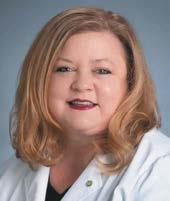
New Primary Care Practice in Trussville
UAB Medicine St. Vincent’s has opened a new primary care practice in Trussville, located on Happy Hollow Road in the existing UAB St. Vincent’s Trussville building. The clinic is open is open Monday through Friday, 8:00 a.m. to 4:30 p.m.
Suzanne Cantley, DSN, CRNP is the treating provider for the practice. A graduate of UAB with a doctorate in nursing, Cantley brings 20 years
of experience as a family medicine practitioner. She has a special interest in treating patients with asthma, and acute illnesses, metabolic disorders, and types 1 and 2 diabetes. Having been diagnosed with Type 1 Diabetes as a child, Cantley helps patients learn how to prevent diabetes, and for patients already diagnosed with diabetes, she incorporates the latest technology to assist patients in managing their disease.
Cullman Regional achieves Zero CLABSI Infection Rate
The Centers for Medicare & Medicaid Services’ (CMS) Healthcare-associated Infections dataset reveals that Cullman Regional is one of only five Alabama hospitals to achieve a central line associated bloodstream infection (CLABSI) rate of zero.
The dataset, developed by Centers for Disease Control and Prevention and collected through the National Health-
American Family Care Hires New CFO
Dan Olivier has joined American Family Care (AFC) as the new Chief Financial Officer. Olivier has more than two decades of financial leadership experience in a variety of industries including healthcare, consumer services, and manufacturing industries.
Most recently, he served as Chief Financial Officer of Ideal Image, an aesthetics brand with more than 800 phy-
care Safety Network, is intended to help hospitals and healthcare regulatory agencies track progress and target areas that need improvement.
A CLABSI occurs when bacteria or other germs enter a patient's central venous catheter, or central line, and then enters the bloodstream. According to the CDC, these infections result in thousands of patient deaths each year.
In addition to achieving a zero CLABSI infection rate, Cullman Regional has been recognized by CMS as a Top 10 percent Performer in the nation for sepsis care and the hospital’s ER consistently beats state and national benchmarks for time-sensitive stroke and heart attack diagnosis and treatment.
sicians and medical professionals across the U.S. Prior to that, he was Vice President of Corporate Controller at Smile Direct Club, a leading provider of orthodontic care.
Olivier earned a Bachelor of Business Administration from the University of Wisconsin and a Master of Business Administration from Purdue University.


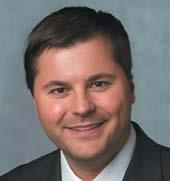
At Pulmonary Associates of the Southeast, we get your patients in sooner. Because sooner is better when someone is struggling with lung function, sleep, asthma, or other critical care conditions. That’s why we make referrals as easy as possible to get your patients in and on their way to feeling better.
Suzanne Cantley, DSN, CRNP
Dan Olivier



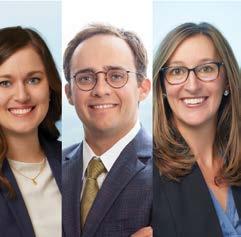


At the heart of one of the most highly regulated industries in the nation, health care facilities and providers face challenges that draw attention and resources away from their mission to provide quality patient care.
Burr & Forman’s health care team works alongside you to address and anticipate your needs by providing preventative guidance and pragmatic solutions, enabling you to focus on providing care and achieving healthy outcomes.
Alabama Health Care Team
Birmingham | Mobile | Montgomery
Jessie Bekker
Howard Bogard
Richard Brockman
Kelli Carpenter Fleming
Jim Hoover
Catherine “Cat” Kirkland
Garrett Lucey
Angie Cameron Smith

